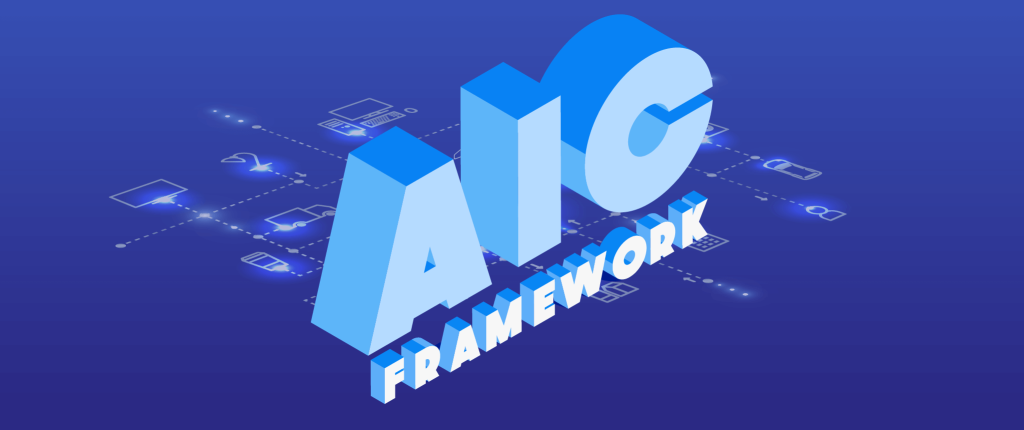Learn how you can Unlock Limitless Customer Lifetime Value with CleverTap’s All-in-One Customer Engagement Platform.

At CleverTap, we’re big on mobile engagement. But what does “mobile engagement” really mean?
On a superficial level, you could say that if someone uses an app, they’re engaged. That works as a definition but it’s quite coarse.
Engagement isn’t a binary choice— there are more fine-grained distinctions than “engaged” and “not engaged.” And some people are more engaged than others. Metrics like DAU or MAU only show a high-level view of how many users are active —not necessarily their depth of engagement.
Measuring and classifying a user’s level of engagement, however, is difficult. Especially if you want a relatively consistent measure that also helps understand the customer lifetime value.
This is where the AIC Framework for Customer Engagement and Retention comes in.
The AIC framework, which we co-created with our partners at Phiture, helps app marketers understand the true nature of user engagement, by telling them which in-app activities contribute towards conversion.
This model measures the degree of user mobile engagement by bucketing each activity into one of three layers: acknowledgment, interest, and conversion.
In short, users in the acknowledgment layer aren’t as engaged as those in the interest layer. And even those users pale in comparison to the engagement in the conversion layer. So if you’re moving users from A to I to C, you’re doing well. That’s the theory behind the framework.
It’s a useful model outside of theory. Use it to see the number of users in each layer and whether you’re improving your mobile funnel.
Let’s take a look at how each layer interacts in a theoretical travel booking app.
Most actions for the acknowledgment layer are simple and only require a user to briefly interact with the app in one way or another.
What Places a User in the Acknowledgment Layer?
This layer doesn’t sound very important, but it’s crucial—these are the people you’ll push toward interest and eventual conversion with mobile marketing best practices.
Let’s consider a travel app, which will likely have push notifications for discount sales around popular destinations or holidays. If users interact with these notifications and eventually book a vacation on the app, it indicates that these specific notification activities in the acknowledgment layer are adding value.
Interest is almost anything between acknowledgment and conversion.
So, in the case of our travel booking app, searching for a flight could be categorized as an interest layer activity. Visiting a special deals page might also count. If a user does these things, you can confidently say that they’re likely to convert.
What Places a User in the Interest Layer?
Choosing your interest events can be a challenge, though. Does tapping a link on the homepage of your app count? What about sharing something with a friend? Scrolling through a news feed? It will depend on your app and which behaviors you’ve classified as interest or conversion.
The thing to keep in mind is that you’re analyzing user behavior of people who are on their way to conversion. So in our travel app, sharing a value deal with a friend might count as interest. But if we had a news app and we needed to choose “interest” events, sharing a news story might not count as interest alone. We might instead look at users visiting the pricing page or looking up information about subscriptions.
Limit Your Interest Triggers
It’s important to not go overboard here. You might be able to identify a dozen or more “interest” triggers. But it’s best to focus on a smaller number of more effective activities—at least at first. Get a good idea of where your users stand in the framework and then start adding new events and triggers.
You’re probably already tracking conversion. And within this framework, you just need to keep doing that.
In our travel app, conversion is simple: booking travel. It might be a flight or a hotel room or a rental car. But if a user completes a transaction, including payment, they go into the conversion layer.
What Places a User in the Conversion Layer?
Don’t get stuck thinking that conversion has to include payment alone. For instance, in the case of social apps, posting a message to a news feed is a conversion event. And for gaming, completing a level is could be a conversion.
So keep in mind that specific conversion actions depend on your line of business.
At this point, you might be thinking that some users will fall into multiple layers. For example, if you’re tracking these layers on a weekly basis, anyone who converted will also register in the interest layer. Even on a daily basis, anyone who shows interest will also show acknowledgment.
And that’s perfectly fine. When put together, the three layers form a pyramid.
This pyramid can become your ultimate measurement of engagement. In addition to tracking DAUs and MAUs, the engagement pyramid helps you understand how users movements across layers, and correlate that with campaign strategies. Targeting specific events and in-app activities will give you a clearer, more actionable path to success.
The AIC framework creates a more detailed view of engagement than traditional measures like daily and monthly active users. It’s also slightly more complicated and involved measurement since it requires constant adjustment in layer activities and changes in campaign strategies based on how users are moving across the funnel. The framework mandates it for marketers to analyze each and every activity in their app. This forces marketers to design user journeys whose goals are not only conversion but also re-engagement. By optimizing user engagement to favor conversion activities can lead to better user retention and higher customer lifetime value.
To understand in more detail how the Acknowledgment – Interest – Conversion framework can help your app improve customer engagement and lifetime value, contact us.